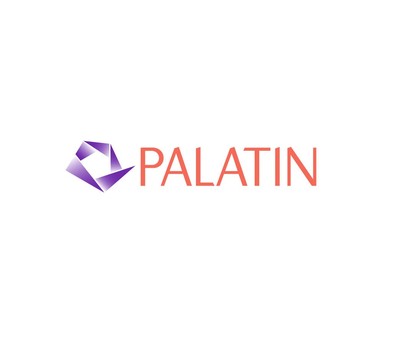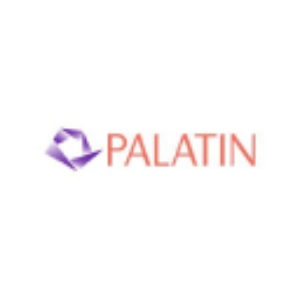Palatin Announces Results of PL9643 MELODY-1 Pivotal Phase 3 Clinical Trial in Patients with Dry Eye Disease (DED)
- On an Intent-to-Treat Analysis, Co-Primary Symptom Endpoint Met, Statistical Significance (P<0.025)
- Multiple Secondary Symptom Endpoints Met, Statistical Significance (P<0.025)
- On an Intent-to-Treat Analysis, Co-Primary Sign Endpoint and Secondary Sign Endpoints Not Met
- PL9643 Demonstrated Superiority Over Vehicle in Multiple Sign Endpoints
- Excellent Safety and Tolerability Profile
- Future Discussions Planned with FDA Regarding Regulatory Approval Path
- Company to Host Conference Call at 8:30 a.m. ET Today
MELODY-1 had two co-primary efficacy endpoints: one clinical symptom (pain) and one clinical sign (conjunctival lissamine green staining), as well as multiple other symptom and sign secondary endpoints of DED. Duration of treatment was 12 weeks with a 4-week run-in period. Analysis of the data indicated that both age and sex needed to be accounted for in the primary statistical analysis, (
"Even with a high vehicle response, PL9643 treatment was clinically meaningful and statistically significantly effective on an ITT basis in reducing patient symptoms for the co-primary pain endpoint and multiple other symptom endpoints," said Carl Spana, Ph.D., President and CEO of Palatin. "We are pleased that PL9643 treatment demonstrated excellent safety and tolerability data, including superior efficacy results compared to vehicle across multiple sign endpoints."
"It is important to note that it is rare for one clinical study in DED to show efficacy for both a sign and a symptom. While additional analyses are ongoing, the initial results reinforce the potential of PL9643 as a treatment to address both symptoms and signs of DED," continued Dr. Spana. "Our comprehensive data analysis is ongoing, and upon completion, we plan to meet with the FDA to discuss and get feedback on the design of the next pivotal Phase 3 clinical trial. Furthermore, we will continue with our efforts for a collaboration partner for our DED program."
Safety analysis indicated PL9643 was well-tolerated. There were fewer ocular treatment related adverse events in the PL9643 arm (
PL9643 represents an opportunity to bring relief to dry eye sufferers. While DED is one of the most common ocular disorders, affecting an estimated 38 million people in the
The data from the pivotal Phase 3 MELODY-1 trial was a multi-center, randomized, double–masked and vehicle–controlled study that enrolled 575 patients at sites in the
Conference Call / Webcast
Palatin will host a conference call and audio webcast on February 28, 2024, at 8:30 a.m. Eastern Time to discuss the PL9643 Phase 3 clinical study results in greater detail. Individuals interested in listening to the conference call live can dial 1-888-506-0062 (US) or 1-973-528-0011 (International), Participant Access Code: 295124. The audio webcast and replay can be accessed by logging on to the "Investor-Webcasts" section of Palatin's website at http://www.palatin.com or by clicking here. A telephone and audio webcast replay will be available one hour after the completion of the call. To access the telephone replay, dial 1-877-481-4010 (US) or 1-919-882-2331 (International), Replay Passcode 50021. The webcast and telephone replay will be available through March 13, 2024.
About Dry Eye Disease (DED)
Dry eye disease is a common inflammatory disease that, left untreated, can become extremely painful and lead to permanent damage to the cornea and vision. DED affects the cornea and conjunctiva of the eye resulting in irritation, redness, pain, and blurred vision. The disease is characterized by insufficient moisture and lubrication in the anterior surface of the eye, leading to dryness, inflammation, pain, discomfort, irritation, diminished quality of life, and in severe cases, permanent vision impairment. Existing therapy for DED is generally regarded as inadequate by many physicians and patients, and often requires weeks or months to demonstrate activity.
References
1. Market Scope 2023 Dry Eye Product Market Review; does not include OTC artificial tears and other Rx anti-inflammatory and tear stimulants.
About Melanocortin Receptor Agonists and Inflammation
The melanocortin receptor ("MCr") system has effects on inflammation, immune system responses, metabolism, food intake, and sexual function. There are five melanocortin receptors, MCR1 through MCR5. Modulation of these receptors, through use of receptor-specific agonists, which activate receptor function, or receptor-specific antagonists, which block receptor function, can have medically significant pharmacological effects. Many tissues and immune cells located in the eye (and other places, for example the gut and kidney) express melanocortin receptors, empowering our opportunity to directly activate natural pathways to resolve disease inflammation.
About Palatin
Palatin is a biopharmaceutical company developing first-in-class medicines based on molecules that modulate the activity of the melanocortin receptor systems, with targeted, receptor-specific product candidates for the treatment of diseases with significant unmet medical need and commercial potential. Palatin's strategy is to develop products and then form marketing collaborations with industry leaders to maximize their commercial potential. To learn more about Palatin, please visit us on www.Palatin.com and follow us on Twitter at @PalatinTech.
Forward-looking Statements
Statements in this press release that are not historical facts, including statements about future expectations of Palatin Technologies, Inc., such as statements about Palatin products in development, including PL9643, clinical trial results, potential actions by regulatory agencies including the FDA, regulatory plans, development programs, proposed indications for product candidates, and market potential for product candidates are "forward-looking statements" within the meaning of Section 27A of the Securities Act of 1933, Section 21E of the Securities Exchange Act of 1934 and as that term is defined in the Private Securities Litigation Reform Act of 1995. Palatin intends that such forward-looking statements be subject to the safe harbors created thereby. Such forward-looking statements involve known and unknown risks, uncertainties and other factors that could cause Palatin's actual results to be materially different from its historical results or from any results expressed or implied by such forward-looking statements. Palatin's actual results may differ materially from those discussed in the forward-looking statements for reasons including, but not limited to, results of clinical trials, regulatory actions by the FDA and other regulatory agencies and the need for regulatory approvals, Palatin's ability to fund development of its technology and establish and successfully complete clinical trials, the length of time and cost required to complete clinical trials and submit applications for regulatory approvals, products developed by competing pharmaceutical, biopharmaceutical and biotechnology companies, commercial acceptance of Palatin's products, and other factors discussed in Palatin's periodic filings with the Securities and Exchange Commission. Palatin is not responsible for updating events that occur after the date of this press release.
Palatin Technologies® is a registered trademark of Palatin Technologies, Inc.
![]() View original content to download multimedia:https://www.prnewswire.com/news-releases/palatin-announces-results-of-pl9643-melody-1-pivotal-phase-3-clinical-trial-in-patients-with-dry-eye-disease-ded-302073599.html
View original content to download multimedia:https://www.prnewswire.com/news-releases/palatin-announces-results-of-pl9643-melody-1-pivotal-phase-3-clinical-trial-in-patients-with-dry-eye-disease-ded-302073599.html
SOURCE Palatin Technologies, Inc.









